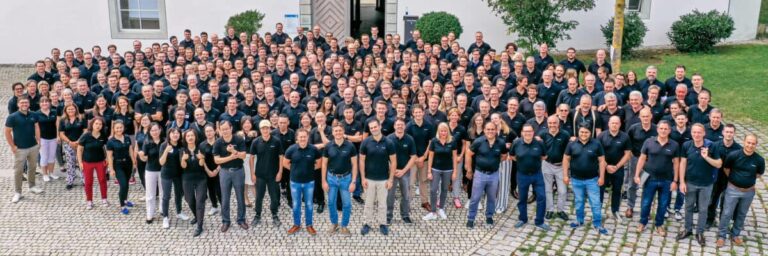Transcript
Hello, everyone, and welcome to real talks presented by RiverLogic.
On each episode, we’re going to be diving into conversations with industry experts to explore the latest trends in supply chain, business transformation, and innovation.
This week, we’re honored to have on Philip Higginsbottom, who’s vice president of corporate development as our guest. Philip will be sharing his insights on how RiverLogic can help any organization make data driven decisions without needing the help of a data scientist. Join us to get the latest information on how RiverLogic helps you make connected decisions. So to start off, Philip, why do partners win with RiverLogic?
Well, RiverLogic allows our partner to focus on the questions that they want to ask. And by that, I mean, before I was at RiverLogic, I spent ten plus years in consulting.
And the nature of a consulting project is the client has specific questions they need answered and then you pinpoint as part of the project what questions you’re going to answer. And the majority of the time spent with a partner is finding the answer, how do you calculate the answer to the first scenario, the second scenario, the third scenario, or first question, second question, third question. What we do is take the heavy lifting of getting the answer out of the hands of the person. And the result of that is that you can get a very flexible representation of the problem scope very quickly, and then once that’s validated, you can ask as many questions of it very, very, very quickly.
So a typical partner, let’s say, use the example that I gave you, they have three questions they want to answer, or three scenarios they want to run. Typically, in the same amount of time, they’ll run forty, fifty scenarios, and the value of running scenarios is that it then becomes a communications tool. And because we have a digital planning twin, and we have end to end representation of the business tied to financials, as a communications school, you can use data and data driven scenarios to talk to each one of the silos, incorporate their point of view, run more scenarios, incorporate their point of view, run more scenarios. So it’s more value added time than just trying to dig around in a in a programming language or try to search for some answer. We help our partners make connected decisions, and we stay with them all the way to ensure their success.
Well, what value does RiverLogic bring partners when delivering a consulting project. Could you tell us a little bit about that? A company wants to partner with RiverLogic because we have very flexible software that commoditizes the best answer, and the value of our software is the questions that you ask of it. One client described to me that they had a a a digital planning twin of their business with our software and they said they had a Ferrari being driven by horses.
And by that, he had the best solution that he needed but he didn’t know what questions to ask. He couldn’t drive the car because he didn’t know what to do with it. And that’s where our consulting partners add value And now that you can simultaneously plan, instead of sequentially plan, how does that change the touch points in the planning cycles? Now that you have constraint based meta view of the entire business? What questions do you ask of it? What actions do you take based on the insights?
Clients need consulting partners that help them do that, and it’s a very long road of transformation that our partners are going down and is enabled by our technology. Our solution is aligned with each customer’s unique business objectives because of the flexibility in our configuration.
We can change objectives at the at the click of a button. We can represent constraints that are data driven and require no programming, As a result, we can very quickly represent very unique constraints of our client’s business.
The value of RiverLogic is that we are a flexible platform that can mold the needs specifically to the client and do it very quickly. And you don’t need river logic support to do it, our partners can do it themselves.
What I want our partners to know about river logic technology is they will get better answers faster, they will be able to run more scenarios in a shorter amount of time they will be able to communicate in a very detailed level suggestions for change that are tied to financials, and The insights require transformation.
They require support above and beyond the insight.
And that stickiness to our partners, it’s better value to their clients, and it’s enabled by our technology.
Well, Philip, how can your team help organizations quickly represent unique constraints, you know, whether they’re looking to go upstream or downstream in the value chain?
If I use a template model and have to fit my business into that predefined representation, There are always going to be constraints that I cannot explicitly represent.
Let’s say it is five cost buckets to represent the reality of how my business operates, and I only have three to put the cost into. Or I need to represent something a little bit upstream or downstream that isn’t captured in that template, then I have to make assumptions. And if you’re making assumptions, now you’re getting into the world of infeasibilities, into the world of translation into into a guessing game. And our technology allows you to represent gives you those five cost buckets.
It gives you the ability to represent the unique constraints to your business explicitly so that you understand, since those constraints represent the decision, how those constraints impact the decision because you see them. So a scenario is a company makes train cars. The last step in making the train car before delivery is painting them. And one person who made all the decisions about what cars go to where to get painted, knew that certain type cars couldn’t fit into certain type painting locations because the sizes were different.
They were too long. They wouldn’t fit. They wouldn’t get painted.
And when that person retires, what are you going to do? All that knowledge is with that person? Well, if you can represent it explicitly in a in a river logic model, then you can take that into consideration when you make decisions on an enterprise wide basis. What advantages does using Riverlaw bring to organizations when quickly validating a model and using their time to just run scenarios instead of searching for the answer with the data scientist.
The benefit of being able to very quickly understand the impact of a scenario is that’s the way that planning in a business environment actually works. You are making decisions every day, and you need to make those decisions immediately because things happen that you have to respond to. If you have to give the problem to a data scientist to go into an isolated area to spend days and weeks in order to tell you what the answer is, Well, the question’s already changed, so the answer isn’t really relevant weeks later.
If you have to give it to a data scientist and wait for an answer the questions usually changed and the answer doesn’t matter. So we didn’t today There’s another aspect of that, which is important, which is a business user that has a very specific expertise on their silo within the business doesn’t want to lean on a data scientist with a technical background that doesn’t understand anything about their silo at the business to tell them the answer, they want to understand the answer themselves, they want to run the scenarios themselves, we enable that we don’t have a trust issue because the business user has to then get an answer translated from a data science. Well, Philip, what are your thoughts on just what technical value that RiverLogic has or brings to partners when building repeatable projects? The technical value is that our platform is very flexible, both from a configuration standpoint and a user experience standpoint.
Why that matters is that in order to change a model, in order to add some explicit, interesting constraints that are client specific, you can do that, and you can do that very fast. Because our front end includes Power BI that is embedded, you have very flexible system to change forms, graphs, reports, maps, such that you can make the experience exactly what client wants. The technical value of RiverLogic is that we have a very flexible modeling structure that is data driven.
So if you go from one client to the next, you keep the same structure, but you can change the configuration of the constraints very easily. So it can be repeatable across multiple practices, across multiple geographies.
The speed of configuration is that it’s all done through the data representation so you can change how you represent data in the underlying technology, and you don’t have to worry about the mathematics or the model relationships. It all drives automatically. Well, in your mind, what does it mean to make connected decisions?
What connected decisions means to me is that there are two layers of connectedness.
You need to understand the impact of your trade offs on an end to end basis. You can’t ignore the behaviors demand of the customer, you can’t ignore the financial situation, you can’t ignore the supply chain. There’s also another level of connected decision that you need to be able to connect the strategic decisions, the longer term decisions with the medium term decisions with the operational decisions, the real world decisions. And if you can’t connect those three layers, then you’re basically playing guessing games, getting from one to the other to the other.
And with the RiverLogic platform, you are allowed to connect those across all of your planning scenario modeling needs at every level in your business. And as a result, you can get closed loop planning so you can actually not only plan in a multi user system, but you can also understand how it impacts reality and and, you know, closed loop system is This is what I thought I was gonna do. This is what I did. This is why, and you continually get smarter.
The whole idea of river logic is to get a realistic under standing of the impact of your decisions so that you can make the right decisions.
And those decisions are connected They’re connected across all the silos in the organization, and they’re connected across all the types of decisions that you’re going to make. And if you can’t link those with the same underlying representation or underlying technology, then you’re gonna be playing a guessing game. If you’re playing a guessing game and something as complex as an enterprise client, then you’re probably gonna guess wrong, and that’s gonna impact your business you’re gonna make less money than you than you could have. You’re gonna make sub optimal decisions. You’re gonna make unintended mistakes.
And it’s gonna be after the fact that you figure it out.
So the technology supporting our customers today are disconnected.
And as a result, there’s a guessing game associated with it. So one example of the guessing game is an approach called the balanced scorecard, which is an approach in which you take qualitative aspects of the business, and then try to use those to understand what you should do.
And at the end of the day, it’s a guessing game. What RiverLogic allows you to do is to quantify all of those aspects so that you understand the impact of taking one action versus another before you make it so that you can align yourself to make better decisions.
Any qualitative view of the world that isn’t data driven and connected is a is a unrealistic view of the world. You have to have the connectedness to know that it’s feasible.
Well, that wraps up the conversation for today. So thank you Philip for joining us on this episode of Real Talks presented by RiverLogic. We hope you enjoyed our conversation with Philip Higginsbottom, vice president of corporate development and just all of the valuable insights he shared on how RiverLogic can help any organization make informed decisions grounded in data without needing a data scientist. Until next time, I’ve been your host Gabrielle, goodbye, and stay tuned for more.



